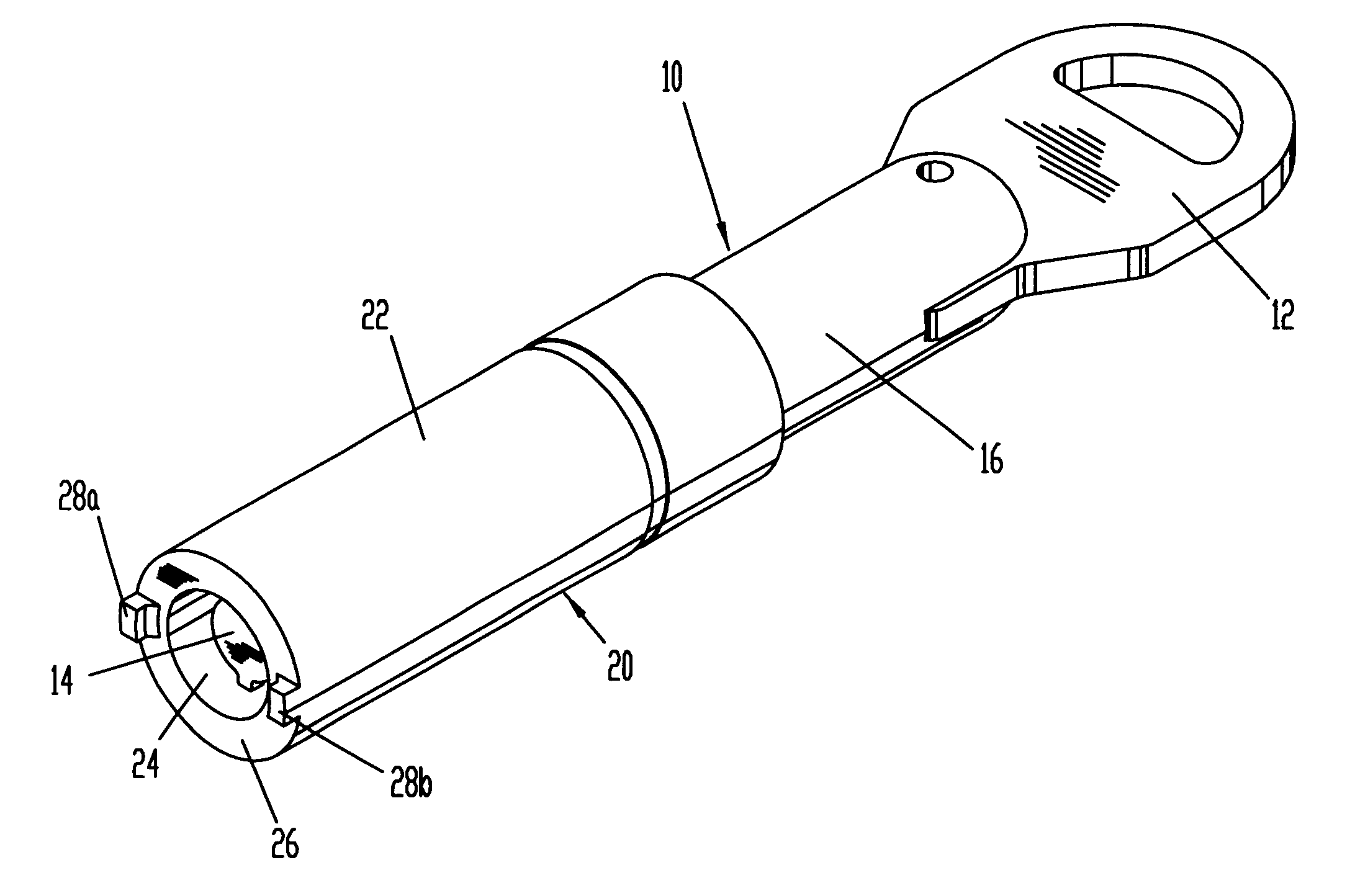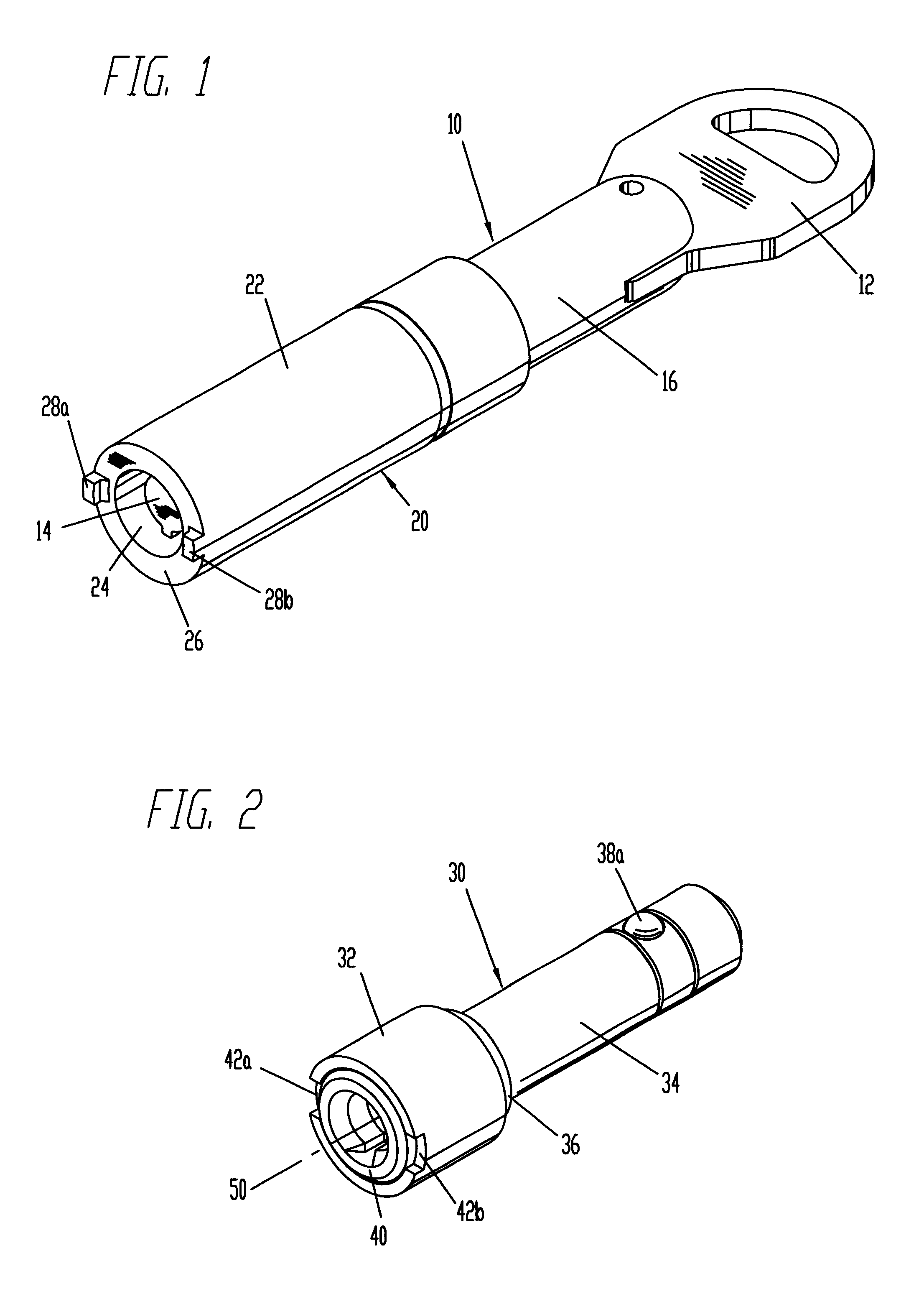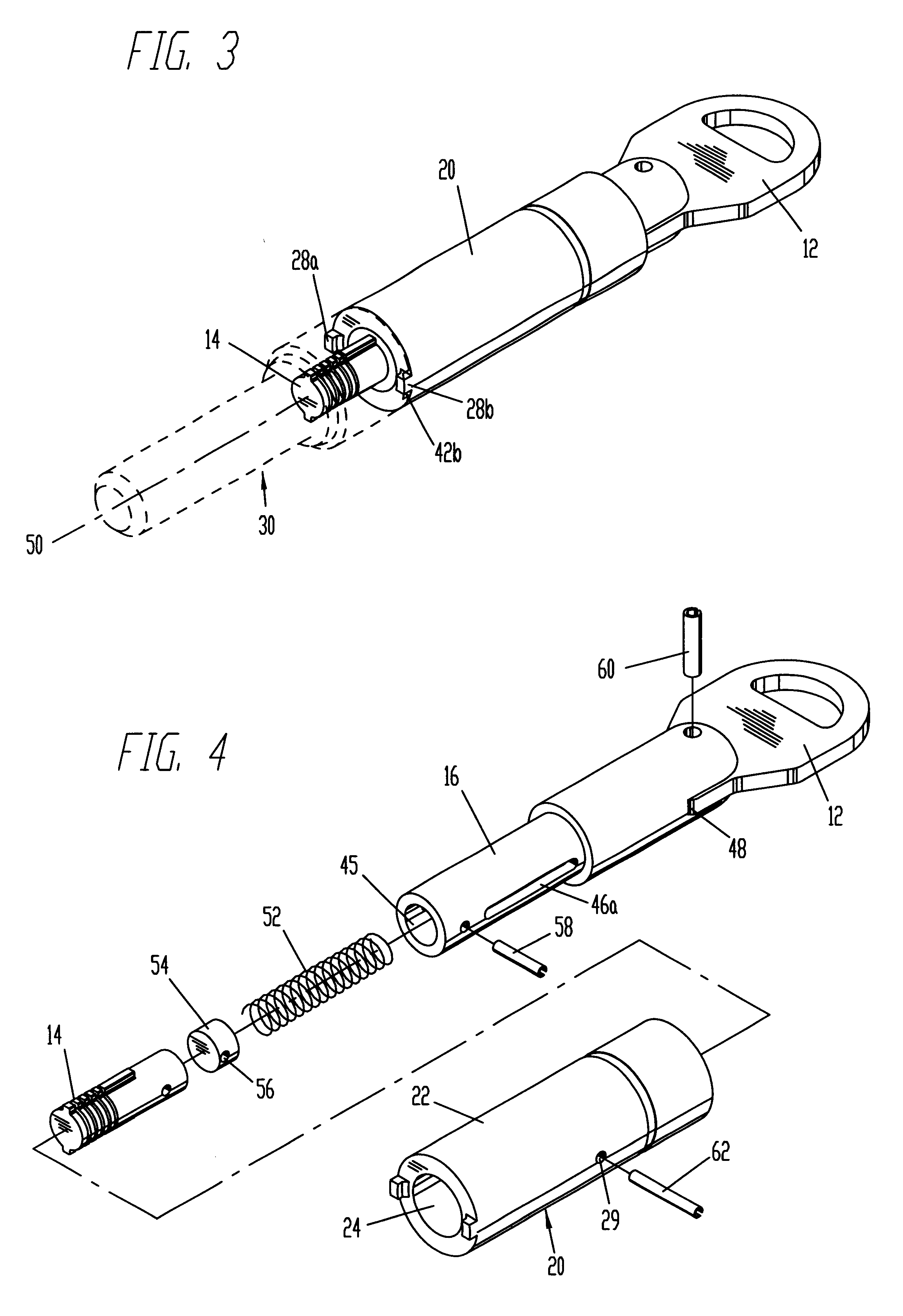Rotation restricted barrel lock and key
- Summary
- Abstract
- Description
- Claims
- Application Information
AI Technical Summary
Benefits of technology
Problems solved by technology
Method used
Image
Examples
Embodiment Construction
Referring to FIG. 1, the preferred embodiment key 10 comprises a handle 12 at one end, heretofore referred to as the top end; and a lock actuating portion or bit assembly 14 at the bottom end. The handle and bit assembly are each rigidly attached to the shaft 16. The lock coupling member or sleeve 20 is slidably and rotatably attached to the shaft 16, and comprises an outer wall 22, a central cavity 24, and an interlocking surface 26 with prongs 28a and 28b. Referring to FIG. 2, the preferred embodiment barrel lock 30 comprises a head portion 32, a smaller diameter shank portion 34, and a shoulder portion 36 between the head and shank portions. Extensible steel balls such as 38a serve to retain the barrel lock 30 in its locking hardware. At the end of the head portion 32 is the key receiving face 40, which includes notches 42a and 42b.
As shown in FIG. 3, when the key 10 is used to actuate the barrel lock 30, the sleeve 20 slides towards the top end of the key, exposing the bit assem...
PUM
 Login to View More
Login to View More Abstract
Description
Claims
Application Information
 Login to View More
Login to View More - Generate Ideas
- Intellectual Property
- Life Sciences
- Materials
- Tech Scout
- Unparalleled Data Quality
- Higher Quality Content
- 60% Fewer Hallucinations
Browse by: Latest US Patents, China's latest patents, Technical Efficacy Thesaurus, Application Domain, Technology Topic, Popular Technical Reports.
© 2025 PatSnap. All rights reserved.Legal|Privacy policy|Modern Slavery Act Transparency Statement|Sitemap|About US| Contact US: help@patsnap.com



